Last Updated on by Mitch Rezman
My name is MitchR. I am an avian influencer. Full transparency – my day gig is selling products just for pet birds – I spend approximately 20% of my work week scanning about 40 Facebook bird groups and niche (species-specific) forums like this. The content I write has one purpose which is to make you a better pet bird keeper.
I think serving dishes filled with any sort of commercial bird food without offering foraging and enrichment opportunities 24/7 in and out of the cage is the single biggest problem with getting our birds to eat properly.
I think attempting to keep a caged bird on a 100% diet of human food called chop will lead to malnutrition.
I think when I see the words “he was on the bottom of the cage trying to build his nest” you should buy a DNA testing kit.
There is no solving a single problem with caged birds. One will always need to look at the cage environment, home environment, non-caregiving humans, diet, sex, age, and artificial light cycles must be taken into account when treating a caged bird’s behavior.
When people write to me with the following words “been told by both (avian vets) that once Greys or Cockatoos start this phobic behavior it’s impossible to stop”.
I ask rhetorically aloud “why can’t I find a picture of a black cockatoo that’s plucked it’s feathers? (my wife is used to these micro outbursts).
I believe that veterinarians should not use Lupron in a misguided attempt to shut down the brooding cycle of a parrot. I believe Lupron will cut your bird’s life in half and make its aging painful,
I can tell you with certainty about 30 cents spent on electricity by exposing a bird to 72 hours of constant light is more effective than $500 of Lupron at shutting down a hen’s egg production yet with zero harmful side effects.
I advocate that you look at your bird(s) “holistically” meaning: nutrition – cage environment – lighting/light cycles – out of the cage environment – clipped or flighted – training – sexuality – species – foraging/enrichment opportunities – exercise – frequency of bathing – other feathered flock members – human flock members.
The problem is not with the bird – it’s with the humans, who most often, lack a plan.
Oh, almost forgot – We have a female Senegal named Peaches and 4 budgies – Bacon, Eggs, Toast, and Jam, which is why we call them the “breakfast club” – they are all rescues.
So enough about me – a pleasure to have met all of you
Written by Mitch Rezman
Approved by Catherine Tobsing
Author Profile
Latest entries
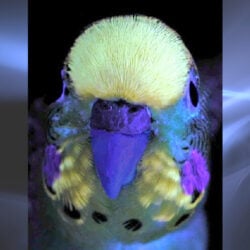 Bird & Parrot AnatomyJune 12, 2025Why are Budgerigars Called The Colorful Parrots?
Bird & Parrot AnatomyJune 12, 2025Why are Budgerigars Called The Colorful Parrots?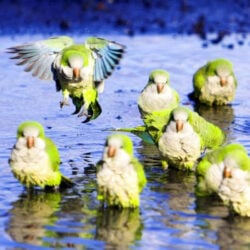 Bird & Parrot AnatomyJune 12, 2025How Do Monk Parakeets Talk to Each Other?
Bird & Parrot AnatomyJune 12, 2025How Do Monk Parakeets Talk to Each Other? 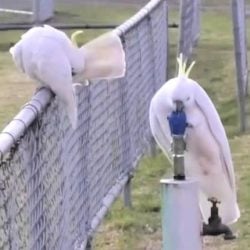 Bird BehaviorJune 10, 2025How Cockatoos Learned to Use Drinking Fountains Like People
Bird BehaviorJune 10, 2025How Cockatoos Learned to Use Drinking Fountains Like People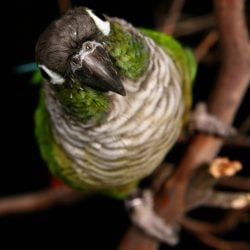 Bird & Parrot CareJune 6, 2025Green Cheek Conure: The Ultimate Guide for Parrot Lovers
Bird & Parrot CareJune 6, 2025Green Cheek Conure: The Ultimate Guide for Parrot Lovers



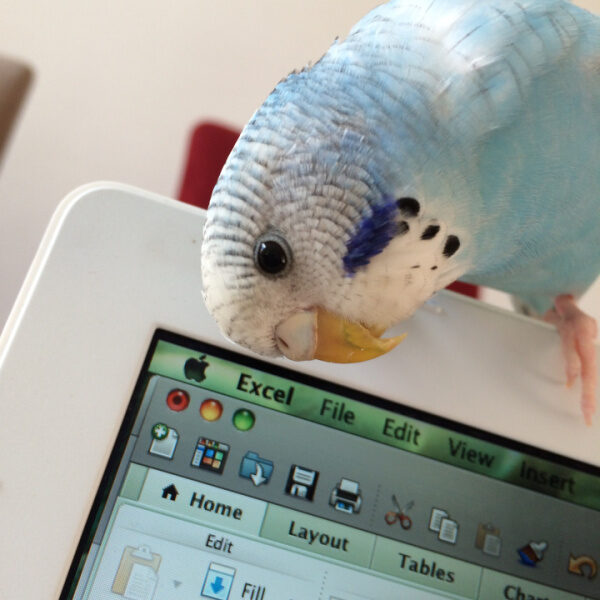

losninos
3 Feb 2017Mitch, I’m sure I am being obtuse but what was purpose of wet vac hose? It wasn’t to house the wires. Thanks!
Kathy Giles
19 Mar 2017I believe it is to house the wires. We used to do the same when we had indoor bunnies
WindyCityParrot
20 Mar 2017great minds think alike!
WindyCityParrot
20 Mar 2017yes it was to house the wires which immediately stopped the chewing of wires